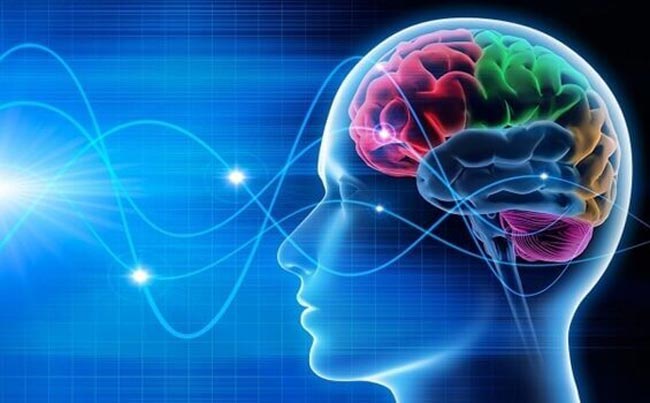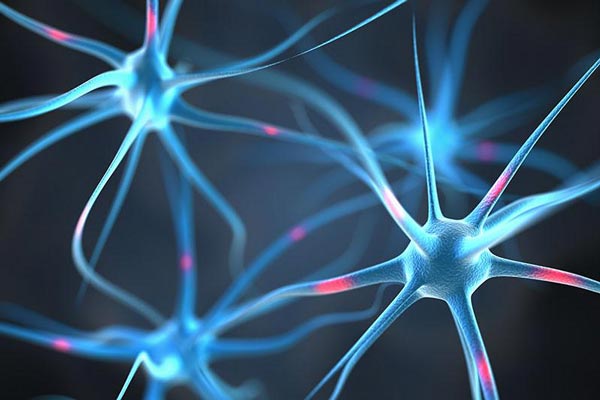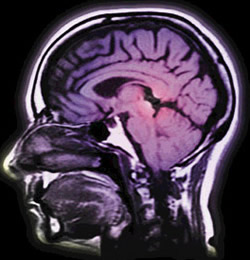The pineal gland, often referred to as the “third eye,” has fascinated scientists, philosophers and spiritual seekers for centuries.
This small, pinecone-shaped gland located in the brain is shrouded in mystery, and many believe it plays a crucial role in consciousness, enlightenment and higher states of awareness.
In this article, I'll explore the pineal gland, its functions and some purported ways to activate and harness its potential.

The Pineal Gland: A Glimpse Inside
The pineal gland, nestled deep within the brain's two hemispheres, is approximately the size of a grain of rice. The gland's primary function is to produce melatonin, a hormone that regulates our sleep-wake cycle. It helps us maintain a natural circadian rhythm and regulates our sleep patterns.
The pineal gland is involved in several scientifically recognized functions:
1. Regulation of Seasonal Changes
The pineal gland responds to changes in daylight length, allowing it to regulate various seasonal functions in animals. In some species, such as birds, it helps govern migratory patterns and reproductive behaviors based on daylight duration.
2. Influence on Puberty
The pineal gland plays a role in the onset of puberty. It helps control the release of gonadotropin-releasing hormone (GnRH), which is crucial for sexual development and reproduction. The timing of puberty is influenced by the pineal gland's response to changes in day length.
3. Immune System Modulation
Emerging research suggests that the pineal gland may influence immune system function. It may regulate the production of immune cells and their activity, potentially impacting the body's ability to fight infections and diseases.
4. Calcification and Aging
Over time, the pineal gland can accumulate calcium deposits, a process known as calcification. This may be associated with aging. Some theories propose that pineal gland calcification could influence cognitive decline, although this remains a subject of ongoing investigation.
5. Neurotransmitter Regulation
Beyond melatonin, the pineal gland produces other neurochemicals, including serotonin and dimethyltryptamine (DMT). While melatonin is well-understood for its sleep-related functions, the roles of these other compounds remain a subject of research and intrigue.
6. Connection to Light and Vision
The pineal gland contains photoreceptor cells similar to those in the retina of the eye. While these cells are not involved in vision, they can detect light and transmit this information to the brain. This light detection may contribute to the pineal gland's role in regulating circadian rhythms.
Purported Spiritual Functions of the Pineal Gland
Beyond the aforementioned functions, the pineal gland has long been associated with higher consciousness and mystical experiences. Many traditions emphasize the pineal gland's role as a bridge between the physical and spiritual dimensions, symbolizing inner wisdom, intuition, and spiritual awakening.
Some of the purported functions and beliefs about the pineal gland include:
1. Seat of the Soul
The belief that the pineal gland is the “seat of the soul” and a connection point between the physical and spiritual realms is prevalent in several spiritual and mystical traditions. Some of the spiritual traditions that hold these beliefs include:
- Ancient Egyptian Spirituality: In ancient Egypt, the pineal gland was associated with the “Eye of Horus” or the “all-seeing eye.” It was believed to be a gateway to higher states of consciousness and spiritual awakening.
- Hinduism: In Hinduism, the pineal gland is linked to the “third eye” or the “ajna chakra.” It is considered a center of intuition, spiritual insight, and enlightenment. Practitioners often focus on this area during meditation to access higher states of consciousness.
- Buddhism: Some Buddhist traditions recognize the pineal gland's significance in meditation and spiritual practice. It is seen as a part of the subtle body that can be activated to deepen one's meditation experience.
- New Age and Esoteric Beliefs: Many New Age and esoteric belief systems incorporate the idea of the pineal gland as a key to spiritual awakening. It is often associated with concepts like the “inner eye” and the quest for higher consciousness.
- Indigenous and Shamanic Traditions: Some indigenous and shamanic traditions consider the pineal gland as a portal to the spirit world and a source of visions and mystical experiences during rituals and ceremonies.
2. Activation of Psychic Abilities
The association between the pineal gland and the development of psychic and paranormal abilities is a topic of interest in various esoteric and metaphysical belief systems. While these claims lack empirical scientific validation, they are often discussed in the context of spirituality and the exploration of human consciousness.
- Expanded Consciousness: Proponents of the idea argue that a fully activated pineal gland can expand an individual's consciousness beyond the limitations of ordinary perception. It is believed to enable access to higher dimensions or realms of existence where psychic and paranormal abilities become accessible.
- Clairvoyance: Clairvoyance refers to the ability to perceive information or events beyond the scope of ordinary sensory perception. Activating the pineal gland is thought to open the “third eye,” which, in turn, may enhance an individual's ability to see and understand events, energies, or information that is not visible to the physical eye.
- Telepathy: Telepathy is the purported ability to transmit thoughts, feelings, or information from one person's mind to another without using any known human senses. Those who believe in pineal gland activation suggest that it can facilitate stronger connections between individuals, allowing them to communicate through non-verbal, telepathic means.
- Precognition: Precognition involves the ability to perceive future events or information before they happen. Activating the pineal gland is said to heighten an individual's intuitive capabilities, enabling them to receive glimpses of the future or premonitions.
- Mystical Experiences: Pineal gland activation is often associated with profound mystical experiences. These experiences can include a heightened sense of interconnectedness, a feeling of unity with the universe, and a sense of transcending time and space. It is believed that these mystical states are conducive to the development of psychic abilities.
3. Spiritual Enlightenment
The belief that activating the pineal gland can lead to spiritual awakening and enlightenment revolves around the idea that the pineal gland serves as a gateway to higher states of consciousness and a profound connection with the universe.
- Spiritual Awakening: Spiritual awakening is often described as a profound shift in one's awareness and perception of reality. Many spiritual seekers view the pineal gland as a potential catalyst for this awakening. They believe that by “awakening” the pineal gland, an individual can access higher levels of consciousness and awareness.
- Deeper Connection with the Universe: Pineal gland activation is associated with a heightened sense of interconnectedness with the universe and all living beings. This experience often leads individuals to perceive the world as a unified and interconnected whole, rather than a collection of separate, isolated entities.
- Profound Sense of Oneness: Activating the pineal gland is believed to facilitate a sense of oneness with all of existence. This oneness encompasses not only a connection with the natural world but also a deep understanding of the interconnectedness of all spiritual and cosmic forces.
- Enhanced Spiritual Insight: Pineal gland activation is thought to open a portal to higher wisdom and spiritual insights. It may lead to a greater understanding of spiritual truths and the nature of existence. This insight is often accompanied by a sense of inner peace and tranquility.
- Altered States of Consciousness: Pineal gland activation practices, such as meditation and deep contemplation, can induce altered states of consciousness. These states are often characterized by a sense of timelessness, transcendence, and an experience of reality beyond the physical world.
- Experiencing Higher Realms: Some individuals who have undergone pineal gland activation report having out-of-body experiences (astral projection), encountering celestial beings, or journeying into higher spiritual realms. These experiences are seen as evidence of a profound connection with the spiritual dimensions of existence.
Ways to Activate Your Pineal Gland
1. Meditation
Meditation plays a significant role in the quest to activate the pineal gland and expand one's spiritual awareness. This practice involves quieting the mind, creating a mental space for deep reflection, and concentrating on a specific area known as the “third eye.” The third eye is typically identified as the region on the forehead, situated just above and between the eyebrows.
During meditation, you can deliberately concentrate your attention on this focal point, which is believed to be linked to the pineal gland. This intense focus is thought to stimulate the gland and initiate a series of processes that could lead to heightened spiritual insight and awareness.
Meditation's effectiveness in pineal gland activation is not only about physical proximity but also the mental and emotional state it cultivates. By achieving a state of deep concentration and relaxation, practitioners may create an environment conducive to heightened consciousness and spiritual experiences.
The significance of this practice lies in its potential to quiet the incessant chatter of the mind, allowing individuals to access deeper layers of their consciousness. It's a process of self-exploration, enabling them to explore the inner realms of their being and connect with the spiritual dimensions of existence.
2. Binaural Beats Music
Listening to binaural beats influences brainwave activity and, in turn, could, at the right frequency, activate the pineal gland.
Binaural beats function on the principle of auditory illusion. When two slightly different frequencies are presented separately to each ear, the brain perceives a third frequency as the difference between the two. the brain then follows along at this frequency, producing brainwaves of the same frequency. This perceived third frequency can correspond to specific brainwave states, such as delta, theta, or alpha.
In the case of pineal gland activation, binaural beats music is often designed to induce brainwave states associated with deep relaxation, meditation and altered consciousness. By listening to these specific frequencies, you can create an environment conducive to pineal gland stimulation.
3. Fasting
Periodic fasting and detoxification diets are methods some individuals employ to potentially decalcify the pineal gland. This unconventional approach is rooted in the belief that certain foods and additives, such as fluoride and processed sugars, may contribute to the calcification of the pineal gland.
The pineal gland is thought to be highly sensitive to dietary and environmental factors. Some individuals are concerned that the presence of fluoride, a common component in tap water and dental products, might accumulate in the pineal gland over time. Similarly, processed sugars are believed to have a negative impact on the gland.
In response to these concerns, some people choose to undergo fasting or detoxification regimens. These practices involve temporarily altering their dietary habits to eliminate potentially harmful substances and allow the body to expel accumulated toxins.
Fasting may entail abstaining from certain foods or even consuming only water or specific cleansing beverages for a designated period. Detoxification diets often emphasize a variety of nutrient-rich foods and beverages that support the body's natural detoxification processes.
4. Sun Gazing
Sun gazing is an intriguing practice that revolves around the idea that direct exposure to the sun's radiant energy can activate the pineal gland and potentially elevate one's spiritual experiences. While this practice is not without controversy and safety concerns, its proponents are enthusiastic about its potential benefits.
The practice of sun gazing involves gazing at the sun during particular times of the day, usually during sunrise or sunset when the sun's intensity is relatively lower. Advocates believe that the sun's energy, absorbed through the eyes and transmitted to the pineal gland, may play a role in activating and awakening this small, enigmatic gland.
The belief is that the pineal gland, often considered the “seat of the soul” in some spiritual traditions, is highly photosensitive. Proponents argue that the sun's energy can stimulate this gland, leading to heightened awareness, spiritual insight, and a sense of profound interconnectedness with the universe. It's seen as a practice that transcends the physical world and opens doors to spiritual dimensions.
While there are anecdotal accounts of individuals claiming transformative experiences through sun gazing, this practice is not without controversy. Skeptics and medical experts emphasize the potential risks of eye damage from prolonged sun exposure, and it's important to approach sun gazing with caution. I do not advocate this practice.
5. Herbal Supplements
Specific herbs and supplements that have garnered attention for their potential pineal gland benefits include chlorella, spirulina, and raw cacao. These natural substances are often lauded for their nutritional and detoxifying properties, which are believed to contribute to overall pineal health.
1. Chlorella: Chlorella is a type of green algae renowned for its high chlorophyll content and potential detoxifying properties. Advocates claim that chlorella may help remove toxins and heavy metals that could contribute to pineal gland calcification. By doing so, it is believed to support the gland's overall function.
2. Spirulina: Spirulina is another type of blue-green algae that is rich in various nutrients and antioxidants. It is often considered a superfood due to its potential health benefits. Some individuals believe that the nutritional support provided by spirulina can promote overall well-being, including pineal gland health.
3. Raw Cacao: Raw cacao is the unprocessed form of cocoa and is recognized for its rich antioxidant content. It is believed to support general brain health and may indirectly contribute to pineal gland health by promoting overall cognitive function.
While these herbs and supplements have their proponents, it's crucial to approach their use with care. Not all supplements are suitable for everyone, and individual responses can vary. B
efore incorporating any herbs or supplements into your routine, it is highly recommended to consult with a healthcare professional. They can offer guidance on appropriate dosages, potential interactions with other medications, and ensure that your choices align with your overall health goals.
In Summary
The pineal gland remains a subject of intrigue, with many believing it holds the key to unlocking higher states of consciousness and spiritual enlightenment.
While the scientific understanding of the pineal gland is ongoing, practices like meditation, listening to binaural beats music and fasting are thought to support its function.
Try to approach pineal gland activation with an open mind, but always prioritize your wellbeing and seek medical advice if you are unsure of any practice you are undertaking.



Leave a Reply